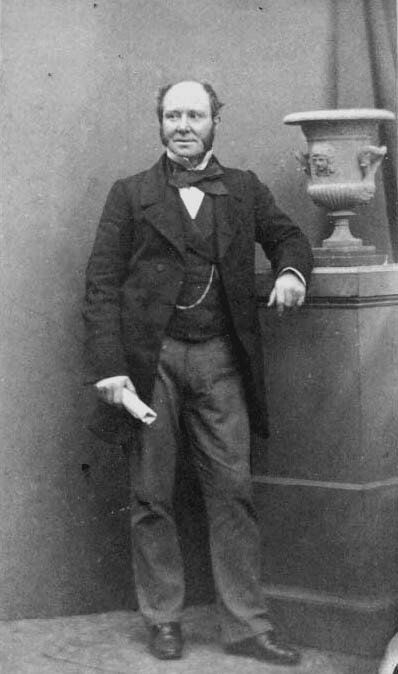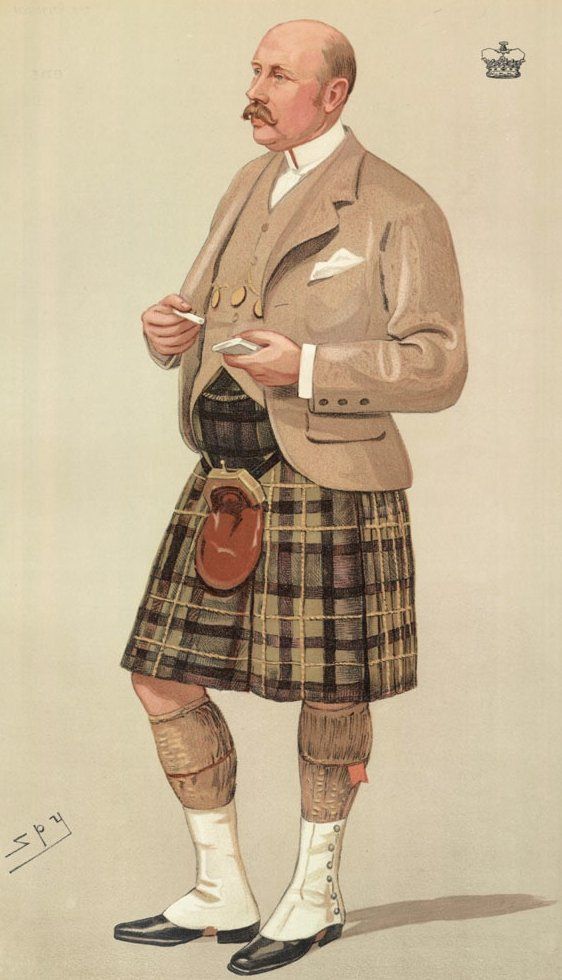A History of the Provincial Grand Masters
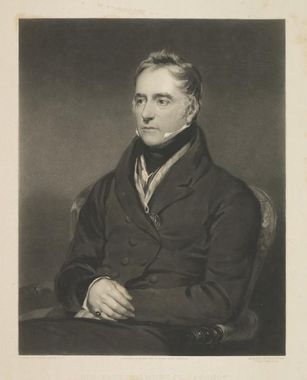
Provincial Grand Masters
Originally Perthshire as whole was a single Province. The Grand Master of the Province of Perthshire in 1801 was Sir Patrick Murray, his picture shown here from the Scottish Portrait Gallery.
On the 5th of November 1827 the Province was divided into Perthshire East and Perthshire West, and so the Provincial Grand Lodge of Perthshire East came into being.
The Province of Perthshire East
Our First Grand Master
The first Grand Master of the Province in 1827 was George William Fox, 9th Lord Kinnaird and Rossie.
Provincial Master 1827-1849.
Grand Master Mason of Scotland 1830-1831
Kinnaird succeeded his father in the lordship of Kinnaird in 1826. This was a Scottish peerage and did not entitle him to an automatic seat in the House of Lords. However, in 1831 he was created Baron Rossie, of Rossie Priory in the County of Perth, in the Peerage of the United Kingdom, which gave him a seat in the upper chamber of Parliament. In December 1839 he was appointed Master of the Buckhounds under Lord Melbourne, a post he held until the government fell in 1841. He was sworn of the Privy Council in early 1840. In 1857 he was made a Knight of the Thistle. Three years later he was created Baron Kinnaird, of Rossie in the County of Perth, also in the Peerage of the United Kingdom. In contrast to the earlier barony, which was created with normal remainder to heirs male, this barony was created with special remainder to his younger brother, Arthur. Kinnaird later served as Lord Lieutenant of Perthshire from 1866 to 1878
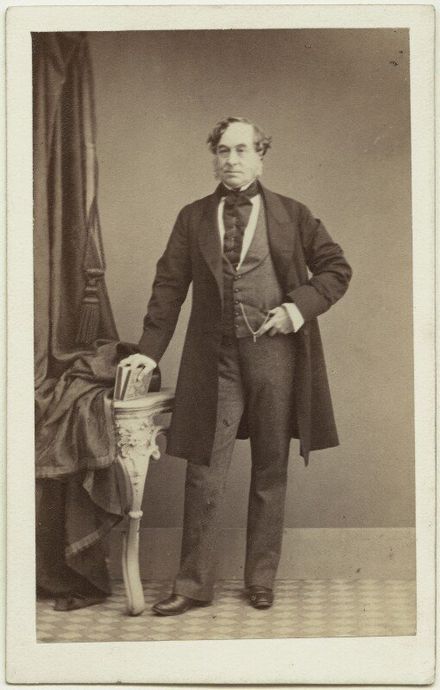
Perthshire East's Second Grand Master
On January 25th 1849 Arthur Fitzgerald Fox, 10th Lord Kinnaird and younger brother of William, become our second Grand master.
Kinnaird was a younger son of Charles Kinnaird, 8th Lord Kinnaird, and Lady Olivia Letitia Catherine, daughter of William FitzGerald, 2nd Duke of Leinster.
He rose to become managing partner of Ransom, Bouverie & Co., a banking firm. He continued in this role once he was elected to Parliament.[ In 1868, he was elected as President of the National Bible Society of Scotland after the resignation of George Campbell, 8th Duke of Argyll.
He was a keen farmer and, in 1862, installed a Turkish bath for cattle at his Millhill Farm at Inchture, raising the temperature higher than usual, and successfully using it in the treatment of distemper.
Kinnaird sat as Member of Parliament for Perth from 1837 to 1839 and again from 1852 to 1878 for the Whigs. He was an avid supporter of Prime Minister Henry John Temple, 3rd Viscount Palmerston, which led to him being nicknamed "Palmerston's shadow". During his time in office, he was known for his desire to seek more representation for Scotland within Parliament. In 1878 he succeeded his elder brother in the Scottish lordship as well as in the barony of Kinnaird, and took his seat in the House of Lords.
Lord Kinnaird married Mary Jane (Hoare) Kinnaird (1816–1888), daughter of William Henry Hoare, in 1843. They had seven children out of whom six grew to adulthood. They settled in London and every Wednesday they would invite discussion on philanthropic projects. They raised funds for the Lock Hospital and Asylum which she and her husband supported. He was a strong supporter of women's suffrage, but his wife felt that this was not in keeping with her idea of a woman's role. She did not speak in public but it is speculated that she wrote his speeches.
In 1847, Kinnaird represented the British Association for the Relief of Distress in Ireland and the Highlands of Scotland, in distributing relief to the Scottish poor. He was treasurer of the Highland Emigration Fund.
In 1856 he and their five children went to live above the bank where he worked in Pall Mall East. This new home became another centre for good works.
Lord Kinnaird died in April 1887, aged 72, and was succeeded by his eldest son, Arthur Fitzgerald. Lady Kinnaird died the following year.
Gavin Campbell, 1st Marquess of Breadalbane
Provincial Grand Master 1879-1899.
Campbell was born at Fermoy, County Cork, the eldest son of John Campbell, 6th Earl of Breadalbane and Holland, by Mary Theresa, daughter of John Edwards, of Dublin. He was educated at St Andrews. After his father succeeded in the earldom of Breadalbane and Holland in 1862, Campbell became known by the courtesy title Lord Glenorchy until he succeeded his father in the earldom in 1871.
Breadalbane served as a lieutenant in the 4th Battalion, Argyll and Sutherland Highlanders from 1873 to 1874. He was later in the Shropshire Yeomanry, from entering as Sub-Lieutenant in 1877, being promoted lieutenant in 1882, retiring as captain in 1887. From 1897 to 1910 he was Lieutenant-Colonel commanding the Highland Cyclist Battalion, of which he became Honorary Colonel in 1913, and was an Aide-de-Camp to King Edward VII in 1903.
As his earldom was a Scottish peerage it did not entitle him to an automatic seat in the House of Lords. However, in 1873 he was created Baron Breadalbane, of Kenmure in the County of Perth, in the Peerage of the United Kingdom, which gave him a seat in the House of Lords. That same year he was appointed a Lord-in-waiting in the Liberal administration of William Ewart Gladstone. The Liberals fell from power in 1874 but returned to office in 1880, when Breadalbane was sworn of the Privy Council and appointed Treasurer of the Household by Gladstone, a post he held until 1885. The latter year he was created Earl of Ormelie, in the County of Caithness, and Marquess of Breadalbane, in the Peerage of the United Kingdom.
Lord Breadalbane did not serve in Gladstone's brief 1886 administration, but once again held office as Lord Steward of the Household from 1892 to 1895, firstly under Gladstone and from 1894 under the premiership of Lord Rosebery. In 1894 he was appointed a Knight of the Garter. He also served as Lord High Commissioner to the General Assembly of the Church of Scotland in 1893, 1894 and 1895 and as Lord Lieutenant of Argyllshire from 1914 until 1922 and was the last holder of the office of Keeper of the Privy Seal of Scotland, which he held from 1907 until his death in 1922 in Glasgow.
He was a Knight of the Order of the Seraphim of Sweden and a Knight of Justice of the Order of St John of Jerusalem (KStJ), in which capacity he represented King Edward VII during the dedication in June 1902 of the restored chapel at Marienburg Castle, originally the seat of the Teutonic Order. He was awarded the silver medal of the Royal Humane Society, and was also a Brigadier-General of the Royal Company of Archers.
Lord Breadalbane married Lady Alma Imogen Carlotta Leonore Graham, the youngest daughter of James Graham, 4th Duke of Montrose, in 1872. They had no children. He died at the Central Station Hotel in Glasgow in October 1922, aged 71, and was buried at Finlarig.
The barony of Breadalbane, earldom of Ormelie and marquessate of Breadalbane became extinct on his death, while he was succeeded in his Scottish titles by his nephew Iain. Lady Breadalbane died in May 1932, aged 77.
1899 Lt Col John CAMPBELL
1903 Thomas CHALMERS
1905 J. Maxtone GRAHAME - RWM of Lodge 44 Holyrood House Edinburgh 1899 - 1902 and again 1908 - 09
1910 Walter STUART
1915 Rev. Andrew W. SMITH
1935 John Bayne MACDONALD
1940 Major Angus MACPHERSON
1949 Samuel ARCHBOLD
1951 William MURRAY
1956 John A. C. LAW
1961 James MACGREGOR
1962 Rev. James K. C. MACKINNON
1967 Peter MACNAB
1972 William M. FERGUSON
1977 David MACGREGOR
1982 Alexander F. CLARK
1987 Watson RAMSAY
1992 Alexander D. MACAULAY
1997 John HUTCHISON
2002 John L. WALKER
2007 Ronald W. A. FORBES
2017 J. J. Russell LOGAN
2022 Ian H. Cameron

